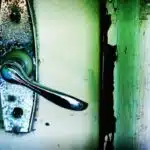Rekeying a lock is an essential service for anyone who needs to change the key that operates their locks. It is a common practice in locksmithing and involves altering the internal workings of a lock so that it can only be opened with a new set of keys. Rekeying locks can be done for various reasons, including security concerns, lost or stolen keys, or when moving into a new home or business premises.
As a locksmith specializing in lock rekeying, I have seen many cases where people have had to replace their entire lock system simply because they lost their keys or moved into a new space. This not only puts undue strain on your wallet but also takes up valuable time and energy. If you’re looking for an efficient and cost-effective way to change your locks without replacing them entirely, then rekeying them might be the right solution for you. In this article, we will discuss how to rekey a lock step-by-step and provide some helpful tips to make the process as smooth as possible.
Understanding The Basics Of Lock Rekeying
Did you know that every year, over 2 million burglaries are reported in the United States alone? That’s a staggering figure, and it highlights the importance of securing your property. One effective way to do this is by rekeying your locks. Rekeying involves changing the pins inside the lock cylinder so that it can only be opened with a new key. This process is more cost-effective than replacing the entire lock and offers several benefits.
One of the most significant benefits of rekeying is increased security. If you’ve lost your keys or had them stolen, there’s a chance someone could gain access to your property without your consent. By rekeying your locks, you eliminate this risk and ensure that only authorized individuals have access to your home or business. Additionally, rekeying allows you to upgrade to high-security locks that provide greater resistance against picking and drilling.
While rekeying may seem like a straightforward process, there are several common mistakes you need to avoid. For example, failing to properly insert the new pins can cause damage to the lock cylinder or render it useless altogether. Similarly, using incorrect tools or not following manufacturer instructions can lead to costly errors. As such, it’s essential to seek professional help when rekeying your locks if you’re unsure about how to proceed.
By now, you understand why rekeying is an important step in protecting your property from unauthorized access. However, before proceeding with this process, you need first to identify the type of lock you have installed.
Identifying The Type Of Lock You Have
- To identify the type of lock you have, it is necessary to examine the lock cylinder for any identifying marks.
- Additionally, the shape of the keyhole can provide clues to the type of lock you have.
- It is also important to note the brand of the lock, as some manufacturers produce locks that are unique to them.
- Examining the lock cylinder and keyhole can help narrow down the type of lock and the possible brands.
- By understanding the type of lock and the brand, a locksmith or lock rekeying specialist can accurately rekey the lock.
- Knowledge of the type of lock, the shape of the keyhole and the brand of the lock will be essential to rekeying the lock.
Examining The Lock Cylinder
Examining the lock cylinder is an essential step in identifying the type of lock you have. As a locksmith, I emphasize the importance of lubrication when examining the cylinder. Lubricating the lock will ensure that it operates smoothly and reduces wear and tear on both the key and lock. It can also prevent future problems with the lock, such as damage to the key or jamming.
During an examination of the cylinder, there are common defects that one should look for. One defect is worn pins, which can cause difficulty in turning the key or result in a key getting stuck inside the lock. Another common issue is misalignment of pins, which may occur due to wear and tear over time or from improper installation. This can lead to difficulty opening or closing the lock, and may require rekeying or replacement.
In conclusion, examining the lock cylinder is crucial when identifying the type of lock you have. A well-lubricated lock is less likely to develop problems, while looking out for common defects can help anticipate issues before they arise. By following these steps, you can ensure your locks are functioning properly and provide peace of mind for yourself and others who rely on them for safety and security.
Determining The Shape Of The Keyhole
Another important step in identifying the type of lock you have is determining the shape of the keyhole. This involves measuring the dimensions of the keyhole, including its width and height, as well as any unique features such as rounded edges or indentations. By doing this, you can determine what type of key will fit into the lock and whether a replacement cylinder is needed.
Measuring keyhole dimensions is particularly important when rekeying a lock or replacing a lock cylinder. It ensures that you find a compatible replacement cylinder that fits securely and operates smoothly with your existing keys. Failure to measure accurately can result in a lock that is difficult to operate or one that poses security risks due to an ill-fitting replacement cylinder.
In summary, determining the shape of the keyhole is another crucial step in identifying the type of lock you have. Measuring keyhole dimensions accurately can help ensure that you select a compatible replacement cylinder that operates smoothly and securely with your existing keys. As locksmiths, we prioritize precision and attention to detail when examining locks to ensure our clients’ safety and security.
Identifying The Brand Of Lock
As locksmiths, our job is to identify the type of lock a client has and provide solutions for any issues they may be experiencing. One important aspect of this task is recognizing the brand of the lock. Different brands often have their unique characteristics, making it easier for us to differentiate between various types of locks that may appear similar. By identifying the brand, we can determine the specific features and components of the lock that require attention.
Lock brand recognition involves a keen eye and extensive knowledge of lock manufacturers. Some popular brands include Schlage, Kwikset, Yale, and Medeco. Each manufacturer may have several models that share similarities in design but differ in functionality or security features. We must understand these differences to provide clients with accurate information about their locks and offer appropriate services such as rekeying or replacement.
Identifying the brand of a lock is crucial in ensuring proper maintenance and repair. As locksmiths, we pride ourselves on providing efficient and effective solutions to our clients’ lock-related issues. By recognizing different brands and their unique characteristics, we can better serve our clients by offering tailored services specific to their needs. Our expertise in this area allows us to work quickly while maintaining precision and attention to detail for optimal results.
Gathering The Necessary Tools
To successfully rekey a lock, it is essential to have the right tools on hand. Choosing the right tools can be challenging, especially for those who are new to locksmithing or lock rekeying. However, with a little bit of research, it is easy to find high-quality tools that will make the process much smoother.
One of the best places to purchase lock rekeying tools is from a reputable locksmith supply store. These stores usually have a wide selection of tools available, including pinning kits, key cutters, and plug followers. Additionally, purchasing from one of these stores ensures that you are getting high-quality tools that have been tested and proven by professionals in the field.
If you prefer to shop online, there are also many options available for purchasing lock rekeying tools. However, it is crucial to be careful when choosing where to buy from as not all online retailers are trustworthy. It is essential to read reviews and do your research before making any purchases online. By choosing the right tools and purchasing them from a reputable source, you can ensure that your lock rekeying project goes smoothly and without any hiccups.
With the necessary tools at hand, the next step is removing the lock from the door.
Removing The Lock From The Door
Now that you have gathered all the necessary tools, it is time to remove the lock from the door. This step is crucial to ensure that you can access the lock cylinder and rekey it properly. Before proceeding with this step, make sure that you have turned off any electricity supply to the lock or door.
Firstly, remove any screws or bolts on the faceplate of the lock. Once these are removed, try turning the key in both directions to see if there is any resistance. If there is, this indicates that the lock cylinder needs to be disassembled before removal. If not, proceed to remove the retaining screw located at the center of the knob.
Secondly, once all screws and bolts have been removed, gently pull out the doorknob or lever handle from both sides of the door. This will expose a metal plate called a rose or escutcheon plate that covers the actual locking mechanism on both sides of your door. Using a flat-head screwdriver or pliers, carefully pry off these plates from both sides.
Thirdly, with both rose plates removed, you can now access and remove the lock cylinder by pushing it out through one side of your door. To do this, use your key to turn it slightly in either direction while applying gentle pressure on one end of the cylinder using a small screwdriver or pick tool until it slides out completely from its housing. Be careful not to apply too much force as this may damage your lock’s internal components.
With all these steps done correctly and carefully, you should now be able to disassemble your lock cylinder without any difficulty. The next section will guide you through this process step-by-step so that you can rekey your locks quickly and easily.
Disassembling The Lock Cylinder
In order to successfully rekey a lock, it’s important to disassemble the lock cylinder. Lock cylinder maintenance is necessary to ensure that the lock remains in good working condition. This section will discuss common lock cylinder issues and the importance of disassembling the lock cylinder during rekeying.
Lock cylinder maintenance is essential for ensuring that your locks remain functional over time. Common problems with lock cylinders include worn out pins, broken springs, and damaged keyways. These issues can prevent the key from turning or cause the lock to become stuck in place. Disassembling the lock cylinder during rekeying allows you to inspect and repair any damage or wear that may be present.
When performing a lock rekey, it’s important to take care when disassembling the lock cylinder. Use a proper set of tools and follow manufacturer guidelines to avoid causing further damage. With careful attention, you can remove any existing pins and replace them with new ones that are matched to a new key. This process helps ensure that only authorized individuals have access to your property.
By removing the old pins from your lock cylinder, you’ll be able to insert new pins that correspond with your new key configuration. This step is essential for preventing unauthorized access while maintaining control over who has access to your property. Remember to take care during this process and always follow safety guidelines when handling locksmith equipment.
Removing The Old Pins
- Inserting a wrench into the lock is the first step when rekeying a lock.
- Once the wrench is in place, carefully separate the plug from the lock body using a twisting motion.
- After the plug is separated, the pins within the lock can be removed.
- It is important to identify the pins and keyways to ensure that the correct pins are replaced.
- To remove the pins, use a small tweezer to carefully extract the pins from the plug.
- Once all the pins have been removed, the plug can be reassembled and the new pins can be inserted.
Inserting A Wrench
To properly remove the old pins from a lock during rekeying, it is important to first insert a wrench into the lock cylinder. This step requires adjusting wrench size according to the lock’s specific dimensions. It is crucial to use the correct wrench size as using a smaller one may cause damage to the pins and springs, while using a larger one may lead to stripped screws or other forms of damage.
As a locksmith or lock rekeying specialist, it is important to utilize proper wrench technique when inserting the tool in the lock cylinder. The keyway should be facing upwards when inserting the wrench, and it should be placed all the way into the cylinder until it touches the back of the plug. Applying pressure downwards with your thumb while holding onto the wrench with your index finger, gently turn it counterclockwise until you feel tension in your fingers. This technique prevents bending or breaking of pins inside the cylinder.
By following these steps and incorporating proper adjusting wrench size and technique, removing old pins from a lock during rekeying can be accomplished effectively and efficiently. With patience and attention to detail, this process can be completed with ease and precision that ensures optimal performance of your locks for years to come.
Separating The Plug
After successfully removing the old pins from a lock during rekeying, the next step is to separate the plug from the cylinder. This process requires proper techniques to ensure that no damage is done to either the plug or the cylinder. As a locksmith or lock rekeying specialist, it is important to understand how to separate the plug effectively.
One crucial step in separating the plug is lubrication. Before attempting to remove the plug, apply lubrication on both sides of it. This will make it easier to turn and prevent any unnecessary force that may cause damage. Additionally, cleaning the plug thoroughly before lubrication can also help ensure smooth operation during separation. These simple steps can save time and prevent costly mistakes.
To separate the plug from the cylinder, use a follower tool that matches with the size of your lock’s specific dimensions. Insert it into the keyway and gently push through until you feel resistance against the back of the cylinder. While holding onto both ends of your follower tool, carefully slide out your wrench while still applying gentle pressure on your thumb towards one end of your follower tool. This will then enable you to remove your old pins completely without damaging anything inside. By following these guidelines on separating plugs during rekeying, you can be sure that everything will function properly when finished without causing any harm along the way.
Removing Pins
To successfully rekey a lock, it is necessary to remove the old pins. This process requires careful attention to prevent damage to the lock mechanism. One of the first steps in removing old pins is to lubricate the lock mechanism. This helps to prevent any unnecessary force while turning and ensures smooth operation during separation.
After lubricating the lock mechanism, it is important to use a proper tool for removing old pins. A follower tool that matches the size of the lock’s specific dimensions should be used to ensure that no damage is done during removal. As a locksmith or lock rekeying specialist, it is crucial to pay close attention when using this tool in order not to damage either the plug or cylinder.
Replacing tumblers also involves careful attention and precision. Once old pins have been removed from a lock, it’s time to replace them with new ones. It is essential that both the size and shape of these new pins match those of the original ones being replaced. Lubrication plays an important role in this phase as well – apply lubrication before inserting new pins into the lock so they slide smoothly into place. By following these guidelines on removing and replacing tumblers during rekeying, one can ensure a properly functioning lock without causing any harm along the way.
Inserting The New Pins
Pinning techniques and pin size selection are essential aspects of rekeying a lock. Once the old pins have been removed, it is time to insert the new ones. To do this, you need to use a plug follower to hold the cylinder plug in place while inserting the new pins. The plug follower will prevent the springs from popping out of the cylinder.
When selecting new pins, it is important to choose pins that match the key’s cuts. Pin size is determined by measuring the length of the pin from end to end using a micrometer. It is also crucial to select pins with different sizes so that they can fit into specific chambers in the lock. For instance, if you have a five-pin lock, you may want to choose three different sizes for your pins.
Once you have selected your new pins and inserted them into their respective chambers using your chosen pinning technique, you should check whether they are flush with each other and at an even height. You can do this by running your finger over each row of pins carefully. Additionally, ensure that no springs or debris are blocking any chambers before testing your new key’s functionality.
With all of your new pins now inserted into their respective chambers correctly, it’s time to test your newly rekeyed lock with a newly cut key. This final step will confirm whether you’ve done everything correctly or not. If there are any issues when testing the new key, double-check that all of your measurements were correct and that there aren’t any obstructions in any of the lock’s chambers before trying again.
Testing The New Key
After successfully rekeying a lock, the next step is to test the new key. This step is crucial in determining if the rekeying process was successful or if there are any issues with the lock. Practical tips include testing the new key in every possible way by inserting and turning it in both directions. It is also important to ensure that all pins have been set properly, as poorly set pins can cause the lock to malfunction.
Common mistakes when testing a newly rekeyed lock include not checking all possible angles and positions of the new key. This may result in missing an improperly set pin or other issues with the lock that could lead to further problems down the line. Additionally, some may forget to test both directions when inserting and turning the key, which can also lead to missed issues.
Once you have thoroughly tested your newly rekeyed lock and confirmed that it is functioning properly with no issues, you can move on to reassembling the lock cylinder. This involves putting all of the pieces back together in their correct order and ensuring that everything is tightly secured before placing it back into the door. By following these steps correctly, you will be able to successfully rekey your own locks without having to call a professional locksmith for assistance.
Reassembling The Lock Cylinder
As we have already tested the new key, it is now time to reassemble the lock cylinder. Imagine that we are like a puzzle solver, carefully putting each piece back in place until the final product is complete. We must be mindful of each component and ensure that they are properly aligned before proceeding with the next step.
Proper lubrication is crucial when reassembling a lock cylinder. A lack of lubrication can cause friction and damage to the components over time. Before inserting the cylinder back into the lock body, apply a small amount of lubricant to all moving parts. This will ensure smooth operation and prolong the lifespan of your newly rekeyed lock.
Common mistakes when reassembling a lock cylinder include misaligning pins, springs, and other components. These mistakes can result in a lock that does not function properly or at all. To avoid these errors, take your time and double-check each component’s placement before continuing with the reassembly process.
Now that we have successfully reassembled our lock cylinder with proper lubrication and attention to detail, it is time to reinstall it on the door. But before we move onto this step, let us first review some important considerations to ensure optimal performance from our newly rekeyed lock.
Reinstalling The Lock On The Door
Once you have successfully rekeyed your lock, it is time to reinstall it on the door. Proper alignment of the lock is key to ensuring that it operates smoothly and securely. Begin by carefully inserting the lock into the hole in the door, making sure that it lines up properly with the strike plate on the frame. Use a screwdriver to tighten the screws on both sides of the lock until it is firmly attached.
After installing the lock, it is important to lubricate all moving parts for optimal performance. There are several lubrication techniques that can be used, such as applying graphite powder or silicone-based lubricants directly into the keyhole or spraying them onto a key and then inserting it into the lock. Be sure not to over-lubricate as this can attract dirt and debris which may cause problems down the line.
Once you have properly aligned and lubricated your rekeyed lock, you are ready to test it out with your new key. Insert your new key and turn it slowly to ensure that everything is working correctly. If there are any issues or problems with operation, double-check your work for proper alignment or lubrication before calling in a professional locksmith for assistance.
Testing The New Key In The Lock
After reinstalling the lock on the door, it is important to test the lock security by rekeying it. Rekeying a lock involves changing its internal mechanism so that a new key can operate it. This process is crucial in maintaining the security of your property by ensuring that only authorized individuals have access.
It is important to note that professional rekeying should be done by a certified locksmith or lock rekeying specialist. Attempting to do it yourself may result in further damage to the lock or compromise its integrity, leading to potential security breaches. Professional locksmiths have specialized tools and knowledge necessary for proper rekeying.
The importance of professional rekeying cannot be overstated. It helps prevent unauthorized access and ensures that you have complete control over who has access to your property. Don’t take chances with your security; always seek professional help when rekeying your locks. Once completed, testing the new key in the lock will give you peace of mind knowing that your property is secure from unwanted intrusions.
Duplicating The New Key
Methods for key duplication vary depending on the type of lock being rekeyed. In general, a locksmith will use specialized equipment to create a duplicate key that matches the new pins and springs in the lock cylinder. Most locksmiths have access to this equipment and can create a new key within a matter of minutes.
When choosing a locksmith for key duplication, it is important to find someone who is reliable and experienced. Look for locksmiths who are licensed and insured, as well as those with positive reviews from previous customers. A reputable locksmith will be able to provide references upon request and should be willing to answer any questions you may have about their services.
Overall, duplicating the new key is an essential step in the process of rekeying a lock. By finding a reliable locksmith who can create an accurate duplicate, you can ensure that your new keys will work smoothly and effectively. With the right tools and expertise, any qualified locksmith can quickly create duplicates that match your newly-rekeyed lock.
As we move forward with updating the key record, it is important to keep in mind that having accurate records is crucial for maintaining security. This step involves documenting any changes made during the rekeying process, including which locks were rekeyed, which keys were created, and any other relevant information. By keeping detailed records and regularly reviewing them, you can ensure that your property remains secure over time.
Updating The Key Record
Creating a key record includes noting the type of lock, the key blank, and the key cutting code. Updating the key record requires the locksmith to replace the existing key with a new one, take an impression of the new key, and record the new key code. The updated key record should include the same information as the original, plus the new key code. Finally, the locksmith must ensure the new key works with the lock before completing the rekeying process.
Creating Key Record
When it comes to rekeying a lock, one crucial step is creating a key record. This process involves keeping track of all the keys that are made for a particular lock and ensuring that they are properly labeled and organized. As a locksmith or lock rekeying specialist, it is your responsibility to create an accurate key record to ensure that the right keys are provided to the right individuals.
Creating a key record is important because it helps ensure the security of the property being protected by the lock. With an accurate key record, you can easily identify who has access to the lock and who should not have access. This level of organization also makes it easier to keep track of which keys have been distributed, so you know when it’s time to rekey the lock again.
Organizing keys may seem like a small task, but it plays a significant role in maintaining security. It can be tempting to take shortcuts when creating key records, but doing so can lead to confusion and potential security breaches down the line. As a locksmith or lock rekeying specialist, taking the time to create an accurate and detailed key record shows your commitment to providing quality service and ensuring that your clients’ property is secure.
Updating Key Record
As a locksmith or lock rekeying specialist, updating the key record is an essential task to maintain key control and key management. It involves updating the record whenever there are changes in the number of keys that have been distributed or when someone loses their key. The purpose of updating the key record is to ensure that only authorized individuals have access to the lock and that there are no security breaches.
Updating the key record is crucial because it helps prevent security threats that may arise when unauthorized individuals gain access to keys. When a person loses their key, for example, they may not report it immediately, leaving room for potential security breaches. By updating the key record, you can quickly identify which keys need to be reissued or which locks need to be rekeyed. This level of organization ensures that there are no loopholes in your clients’ security measures.
To update the key record effectively, it is vital to keep accurate records and regularly check them against physical keys. This process helps ensure that all keys are accounted for and that no unauthorized copies exist. Additionally, it’s important to communicate with your clients about any updates made to their key records so they can stay informed about who has access to their property. Updating the key record is a continuous task that requires attention and diligence from locksmiths and lock rekeying specialists alike – but its importance cannot be overstated in maintaining secure properties for our clients.
Maintaining Your Rekeyed Locks
Updating the Key Record is an essential step in rekeying your locks. It involves keeping track of the new key’s code and ensuring that only authorized individuals have access to it. A locksmith or lock rekeying specialist should maintain a comprehensive record of the locks they rekey, including the date, location, and code of each key. Updating this record will guarantee that you can quickly identify any security breaches and take corrective action.
Key maintenance is crucial in maintaining your rekeyed locks’ effectiveness. Over time, keys may wear down or become damaged, resulting in reduced lock security. Locksmiths recommend replacing your keys every few years to ensure optimal performance. Additionally, you can clean your locks periodically to remove dirt and debris that may interfere with their operation.
Rekeying your locks has several benefits beyond increased lock security. For example, if you recently moved into a new home or office space, rekeying your locks will give you peace of mind by preventing unauthorized access from previous tenants or employees. Additionally, if you lost your keys or had them stolen, rekeying your locks will prevent anyone from using them to gain entry into your property without permission.
In conclusion, maintaining accurate records and performing regular key maintenance are essential components of maintaining the security of your rekeyed locks. Rekeying has several benefits beyond increased security and is highly recommended for anyone concerned about their property’s safety. In the next section, we will discuss some additional benefits of rekeying your locks that go beyond simple security measures.
Benefits Of Rekeying Your Locks
Rekeying your locks is a cost-effective way to enhance the security of your home or business. This process involves changing the pins and springs inside the lock cylinder so that it can only be opened with a new key. By doing so, you eliminate any old keys that may have fallen into the wrong hands or been duplicated without your knowledge. This is a quick and easy process that can be done by a professional locksmith in just a few minutes.
Cost savings is one of the main benefits of rekeying your locks. Instead of replacing all of your locks, which can be expensive, you can simply have them rekeyed for a fraction of the cost. Additionally, this process ensures that you don’t have to worry about anyone else having access to your property with an old key. It’s also beneficial if you’ve lost track of how many keys were made for your property over time.
Another benefit of rekeying your locks is the enhancement of security. With new keys, you can control who has access to your property and when they have access. You can also upgrade to high-security locks with additional features like pick-resistant cylinders or deadbolts for added protection against break-ins. Additionally, installing smart lock systems can provide further convenience and security by allowing remote access control through mobile devices.
- Cost savings: Rekeying costs less than replacing all locks
- Enhanced security: Control who has access to your property
- Additional features: Upgrade to high-security locks and smart lock systems
Rekeying your locks offers both cost savings and enhanced security measures for homeowners and businesses alike. By eliminating any old keys that may have fallen into the wrong hands, you’ll gain peace of mind knowing that only authorized individuals will have access to your property. Consider upgrading to high-security locks or smart lock systems for even more protection against unwanted intruders.
Conclusion
Lock rekeying is a process that can be easily done by anyone who has the right tools and knowledge. It is an effective way to enhance the security of your home, office or any other property without having to replace all your locks. By changing the key pins inside the lock cylinder, you can ensure that only those with the new keys can gain access.
It is important to note that approximately 30% of burglars enter homes through unlocked doors or windows, while 60% use force to break into properties. Rekeying your locks can reduce these risks since it eliminates the possibility of someone accessing your property with old keys or duplicate copies. Additionally, it saves you money and time by not having to replace all your locks.
As a locksmith/lock rekeying specialist, I highly recommend rekeying your locks at least once every few years or when moving into a new property. It is crucial to identify the type of lock you have before gathering the necessary tools and removing it from the door. Disassembling the lock cylinder and duplicating the new key are also essential steps in this process. Updating your key record and maintaining your rekeyed locks will further increase their effectiveness in securing your property. Overall, rekeying provides a cost-effective solution for enhancing security against potential threats such as burglary or unauthorized access.
Image Credits
- “Super Maximum Security 7 Pin Easy Rekey Practice Lock” by taubinphoto (featured)





























